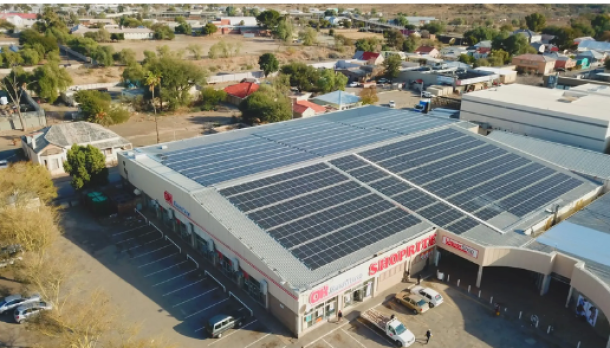Unilever’s new climate plan puts carbon labels on 70 000 products
Unilever NV is releasing a new set of climate goals that make it the most ambitious of any consumer goods company tackling carbon emissions.
The maker of Dove skincare, Colman’s mustard, and Q-tips cotton swabs now aims to zero out all emissions from its own operations and those of its suppliers by 2039.
More than that, it’s going to show its work: each of the company’s 70,000 products will show on their labels how much greenhouse gas was emitted in the process of manufacturing and shipping them to consumers. The company is also committing to invest €1 billion ($1.1 billion) in climate-friendly initiatives over the next decade.
The global carbon disclosure nonprofit CDP already ranks Unilever highly for climate-friendly corporate governance and prioritizing emissions reduction in its supply chain. The conglomerate set its first science-based climate target back in 2010, when it committed to cutting all the emissions associated with its products by half by 2030. Unilever’s emissions continued to rise until 2016, but they’ve been falling ever since. The company’s biggest rivals, Kraft Heinz Co. and Procter & Gamble Co., fare far worse on CDP’s scale.
“While the world is dealing with the devastating effects of the Covid-19 pandemic, and grappling with serious issues of inequality, we can’t let ourselves forget that the climate crisis is still a threat to all of us,” said Alan Jope, Unilever’s chief executive officer, in a statement.
To accomplish its new goals, Unilever will aim to reduce greenhouse-gas emissions as far as possible before leaning carbon offsets. While in theory these offsets balance out emissions by funding activities such as tree planting, landscape restoration, and regenerative farming—all of which can to suck carbon out of the air and put it back in the ground—in practice serious questions remain about the carbon accounting used by many companies offering offsets.
“We could announce that we are carbon neutral today by just spending money on offsets,” says Marc Engel, Unilever’s global head of supply chain. “But we have deliberately decided not to do that.”
The company emits about 100 million metric tons of carbon dioxide annually, Engel says. About 3 million metric tons of those emissions fall under Scope 1 and Scope 2, meaning the emissions are produced by Unilever burning fossil fuels to heat its offices and power its factories. Those emissions will be cut to zero by 2039 under the new plan.
Unilever is further committing to eliminate 30 million metric tons of emissions produced on its behalf in the furnishing of raw materials or shipping finished products to supermarket shelves. The suppliers who create these emissions, known as Scope 3, will have nine months to adopt science-based climate targets that lead to cuts. The company’s remaining 65 million metric tons of emissions under Scope 3 are produced in the use of Unilever products—whenever someone boils water, say, for a cup of Lipton tea. Unilever will try to cut these in half by 2030.
“That’s the part we least control,” Engel says. Cuts “will rely on governments greening the grid, replacing natural gas with hydrogen, etc.” But product innovation can help, such as producing detergents that can be used in washing machines with water at room temperature, rather than at high temperatures as is typical today.
As part of the same climate plan, Unilever is committing to go “deforestation-free” throughout the supply chains for the five raw ingredients most associated with tree loss: palm oil, soybeans, tea, paper, and cocoa. For now the company relies on certification done by third parties, but it’s moving to a verification process that will use satellite imagery and blockchain technology.
“It makes certification obsolete because you literally have real-time verification,” says Engel. That data will be made available for anyone to verify for themselves.
The most challenging task will be carbon labeling all its products. Some companies, such as oat milk-maker Oatly Inc., have started to print on their packaging how many kilograms of carbon dioxide were released in the making of products. Engel is aiming to do that for Unilever’s entire inventory, from shampoo to coffee to mayonnaise to deodorants.
Currently there are no standards or third-party verification available, which means that consumers will have to take the company’s word for it. But Engel says he hopes Unilever’s competitors will follow suit, and that soon there will be an independent standard for carbon labeling just as there is for nutritional labels on foodstuffs.
“It’s a very big commitment,” he says. “But we are clearly seeing that consumers want to know how the products they buy contribute to their own carbon footprint.”
BLOOMBERG
News Category
- International retailers
- On the move
- Awards and achievements
- Legislation
- Wine and liquor
- Africa
- Going green
- Supplier news
- Research tools
- Retailer trading results
- Supply chain
- Innovation and technology
- Economic factors
- Crime and security
- Store Openings
- Marketing and Promotions
- Social Responsibility
- Brand Press Office
Related Articles

Woolworths invests over R17,5 million in renewa...

Shoprite joins City of Cape Town renewable ener...

Pick n pay upcycles air-conditioning systems, s...

Shoprite Group opens pathways to job opportunit...


